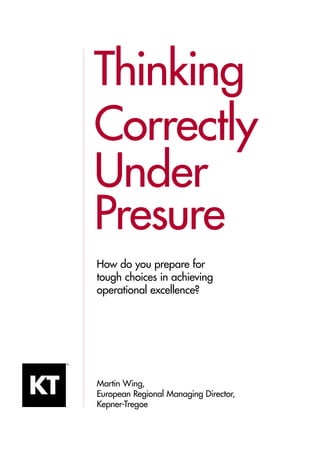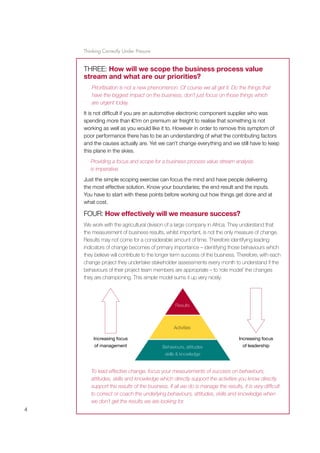The document discusses how to think clearly under pressure to achieve operational excellence. It outlines 8 tough choices that must be made: 1) defining goals, 2) engaging leadership, 3) scoping processes and prioritizing, 4) measuring success, 5) developing capabilities, 6) organizing roles, 7) building sustainable cultures, and 8) avoiding barriers. Clear thinking is important for dealing with everyday pressures so people are prepared when pressure is high. Leadership must engage others, understand capabilities, and role model behaviors to ensure everyday performance is a company's best.







